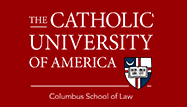Abstract
Tradition is in vogue.[1] Across a wide variety of areas, the Supreme Court has embraced “history and tradition” as its primary methodology for determining the meaning of constitutional provisions.[2] Recently the Court has even suggested that a restriction on the use of names in trademarks could rest entirely on its traditional status,[3] but nowhere has this move toward tradition been as robust or longstanding as in the speech context. Since the 1940s, the Supreme Court has invoked tradition to defend content-based or categorical restrictions, and more recently, it has purported to rely exclusively on tradition.[4] The language The Court has used to the Supreme Court uses to describe its reliance on tradition as a justification for categorically prescribing some forms of expression is unequivocal: “From 1791 to the present . . . [w]e have recognized that ‘the freedom of speech’ referred to by the First Amendment does not include a freedom to disregard these traditional limitations.”[5]
[1] See Marc O. DeGirolami, Something Other Than Originalism Explains This Supreme Court, N.Y. Times (Mar. 29, 2024), https://www.nytimes.com/2024/03/29/opinion/supreme-court-originalism-tradition.html [https://perma.cc/66A4-E26R].
[2] See id; see generally N.Y. Pistol & Rifle Ass’n v. Bruen, 597 U.S. 1, 17 (2022) (holding that a history and tradition methodology would be utilized in Second Amendment cases); Mallory v. Norfolk Southern Ry., 600 U.S. 122, 140 (2023) (holding that traditional methods of establishing personal jurisdiction are not displaced by the minimum contacts framework); Vidal v. Elster, 602 U.S. 286, 301 (2024) (holding that “history and tradition is sufficient to conclude that the names clause—a content-based, but viewpoint-neutral, trademark restriction—is compatible with the First Amendment.”).
[3] Vidal, 602 U.S. at 301.
[4] Chaplinsky v. New Hampshire, 315 U.S. 568, 571-73 (1942); United States v. Stevens, 559 U.S. 460, 468 (2010).
[5] R.A.V. v. City of St. Paul, 505 U.S. 377, 382-83 (1992) (quoting Roth v. United States, 354 U.S. 476 (1957)).
Recommended Citation
Brett Zicari,
The Limits of Tradition: Counterman, True Threats, and the Categorical Approach to Free Speech,
33
Cath. U. J. L. & Tech
59
(2025).
Available at:
https://scholarship.law.edu/jlt/vol33/iss2/3
Included in
First Amendment Commons, Internet Law Commons, Privacy Law Commons, Science and Technology Law Commons

